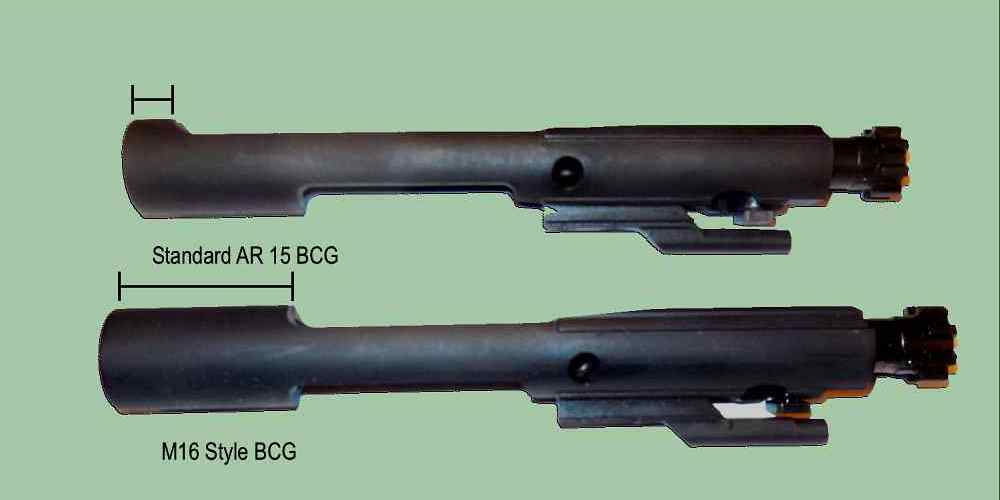“BCG: Building a sustainable future, one material at a time.”
Benefits of Using Sustainable Materials in BCG Production
When it comes to producing BCG (Bacillus Calmette-Guérin) vaccines, the materials and processes used can have a significant impact on the environment. As the demand for vaccines continues to rise, it is important for manufacturers to consider the environmental implications of their production methods. One way to mitigate these impacts is by using sustainable materials in the production of BCG vaccines.
Sustainable materials are those that are sourced and manufactured in a way that minimizes harm to the environment. This can include using renewable resources, reducing waste, and minimizing energy consumption. By incorporating sustainable materials into the production of BCG vaccines, manufacturers can help reduce their carbon footprint and contribute to a more sustainable future.
One of the key benefits of using sustainable materials in BCG production is the reduction of greenhouse gas emissions. Traditional manufacturing processes often rely on fossil fuels and other non-renewable resources, which can contribute to climate change. By using sustainable materials, manufacturers can reduce their reliance on these harmful resources and lower their overall carbon emissions.
In addition to reducing greenhouse gas emissions, sustainable materials can also help minimize waste and pollution. Many traditional manufacturing processes generate large amounts of waste that can end up in landfills or pollute the air and water. By using sustainable materials that are biodegradable or recyclable, manufacturers can help reduce the amount of waste produced and minimize their impact on the environment.
Furthermore, sustainable materials can also help conserve natural resources. Many traditional manufacturing processes rely on the extraction of raw materials from the earth, which can deplete finite resources and harm ecosystems. By using sustainable materials that are sourced responsibly, manufacturers can help protect natural habitats and ensure that resources are available for future generations.
Another benefit of using sustainable materials in BCG production is the potential for cost savings. While there may be an initial investment required to switch to sustainable materials, the long-term benefits can outweigh the upfront costs. By reducing energy consumption, waste, and pollution, manufacturers can lower their operating expenses and improve their bottom line.
Overall, the environmental impact of BCG materials and production is an important consideration for manufacturers. By using sustainable materials, manufacturers can reduce their carbon footprint, minimize waste and pollution, conserve natural resources, and potentially save money. As the demand for vaccines continues to grow, it is crucial for manufacturers to prioritize sustainability in their production processes. By making the switch to sustainable materials, manufacturers can help protect the environment and create a more sustainable future for all.
The Role of Recycling in Reducing Environmental Impact of BCG Materials
The production and disposal of building construction and demolition waste (BCG) materials have a significant impact on the environment. BCG materials include concrete, wood, metal, and other materials that are generated during construction, renovation, and demolition activities. These materials can contribute to air and water pollution, greenhouse gas emissions, and habitat destruction if not managed properly.

One way to reduce the environmental impact of BCG materials is through recycling. Recycling involves collecting, sorting, processing, and reusing materials that would otherwise be discarded as waste. By recycling BCG materials, we can conserve natural resources, reduce energy consumption, and decrease the amount of waste sent to landfills.
Recycling BCG materials also helps to reduce greenhouse gas emissions. When BCG materials are sent to landfills, they can decompose and release methane, a potent greenhouse gas that contributes to climate change. By recycling BCG materials, we can prevent these emissions and help to mitigate the effects of climate change.
In addition to reducing greenhouse gas emissions, recycling BCG materials can also help to conserve natural resources. Many BCG materials, such as concrete and metal, require significant amounts of energy and resources to produce. By recycling these materials, we can reduce the demand for new resources and lessen the environmental impact of their extraction and processing.
Furthermore, recycling BCG materials can help to create a more sustainable and circular economy. In a circular economy, materials are continuously reused and recycled, rather than being disposed of as waste. By recycling BCG materials, we can keep valuable resources in circulation and reduce the need for new materials to be extracted from the environment.
There are several ways that recycling BCG materials can be incorporated into construction and demolition activities. One common practice is to separate BCG materials at the job site and transport them to recycling facilities for processing. Materials such as concrete, wood, and metal can be crushed, shredded, or melted down and turned into new products or used as raw materials for manufacturing.
Another approach is to use recycled BCG materials in construction projects. Recycled concrete can be used as aggregate in new concrete mixes, recycled wood can be used for flooring or furniture, and recycled metal can be used for structural components. By incorporating recycled materials into construction projects, we can reduce the environmental impact of new construction and help to close the loop on material use.
In conclusion, recycling BCG materials plays a crucial role in reducing the environmental impact of construction and demolition activities. By recycling BCG materials, we can conserve natural resources, reduce greenhouse gas emissions, and create a more sustainable and circular economy. It is essential for construction companies, contractors, and policymakers to prioritize recycling and incorporate it into their practices to help protect the environment for future generations.
Carbon Footprint of BCG Production Process
When it comes to considering the environmental impact of various products and processes, it’s important to take a closer look at the materials and production methods involved. In the case of BCG (Bacillus Calmette-Guérin) materials, which are used in the production of vaccines for tuberculosis, the carbon footprint of the production process is a key factor to consider.
The production of BCG materials involves several steps, each of which contributes to the overall carbon footprint of the process. One of the primary sources of carbon emissions in the production of BCG materials is the energy required to cultivate the bacteria used in the vaccine. This energy is typically derived from fossil fuels, which release carbon dioxide and other greenhouse gases into the atmosphere when burned.
In addition to the energy required for cultivation, the production of BCG materials also involves the use of various chemicals and materials, many of which have their own environmental impacts. For example, the production of BCG materials often involves the use of plastic containers and other disposable materials, which can contribute to pollution and waste.
Overall, the production of BCG materials has a significant carbon footprint, which can have a negative impact on the environment. However, there are steps that can be taken to reduce this impact and make the production process more sustainable.
One way to reduce the carbon footprint of BCG production is to switch to renewable energy sources, such as solar or wind power, for the energy required for cultivation. By using renewable energy, the carbon emissions associated with the production process can be significantly reduced.
Another way to reduce the environmental impact of BCG production is to minimize the use of disposable materials and chemicals. By using reusable containers and implementing more sustainable practices, such as recycling and waste reduction, the amount of pollution and waste generated by the production process can be minimized.
In addition to reducing the carbon footprint of BCG production, it’s also important to consider the environmental impact of the materials themselves. BCG materials are typically derived from live bacteria, which are cultivated in a laboratory setting. While these bacteria are not harmful to the environment, their cultivation and production can still have an impact on the surrounding ecosystem.
To mitigate this impact, it’s important to ensure that the bacteria used in BCG production are sourced responsibly and sustainably. This can involve using bacteria that are naturally occurring in the environment, rather than genetically modified strains, and implementing practices that minimize the impact on local ecosystems.
In conclusion, the production of BCG materials has a significant carbon footprint, which can have a negative impact on the environment. However, by taking steps to reduce this footprint and minimize the environmental impact of the production process, it’s possible to make BCG production more sustainable and environmentally friendly. By using renewable energy sources, minimizing the use of disposable materials, and sourcing bacteria responsibly, we can help to protect the environment and ensure a more sustainable future for all.
Water Usage and Conservation in BCG Manufacturing
When it comes to the production of building construction materials, water usage and conservation are critical factors to consider. The manufacturing process of materials like bricks, cement, and glass (BCG) requires a significant amount of water, making it essential to implement sustainable practices to minimize environmental impact.
Water is a vital resource in the production of BCG materials, with large quantities needed for mixing, cooling, and cleaning during the manufacturing process. The extraction of raw materials, such as clay for bricks or limestone for cement, also requires water for processing and transportation. As a result, the production of BCG materials can have a substantial impact on local water sources and ecosystems if not managed properly.
To address these challenges, many BCG manufacturers are implementing water conservation measures to reduce their environmental footprint. One common practice is the use of closed-loop systems that recycle water within the manufacturing process, minimizing the amount of fresh water needed. By reusing water for multiple purposes, manufacturers can significantly reduce their water consumption and minimize wastewater discharge.
In addition to recycling water, BCG manufacturers are also investing in technologies that improve water efficiency. For example, advanced filtration systems can help remove impurities from wastewater, allowing it to be reused in the manufacturing process. By treating and reusing wastewater, manufacturers can reduce their reliance on freshwater sources and minimize their impact on the environment.
Furthermore, BCG manufacturers are exploring alternative sources of water to reduce their dependence on traditional freshwater sources. Rainwater harvesting systems can capture and store rainwater for use in manufacturing processes, reducing the strain on local water supplies. Similarly, greywater recycling systems can treat wastewater from sinks and showers for reuse in non-potable applications, further conserving freshwater resources.
Overall, water usage and conservation in BCG manufacturing play a crucial role in minimizing the environmental impact of these materials. By implementing sustainable practices such as water recycling, efficiency improvements, and alternative water sources, manufacturers can reduce their water footprint and protect local ecosystems. As the demand for BCG materials continues to grow, it is essential for manufacturers to prioritize water conservation to ensure a sustainable future for the industry.
In conclusion, water usage and conservation are critical considerations in the production of BCG materials. By implementing sustainable practices and investing in water-saving technologies, manufacturers can minimize their environmental impact and contribute to a more sustainable industry. As the industry continues to evolve, it is essential for manufacturers to prioritize water conservation to protect our precious water resources for future generations.
Strategies for Minimizing Waste in BCG Production
BCG, or Bacillus Calmette-Guérin, is a vaccine used to prevent tuberculosis. The production of BCG vaccines involves the use of various materials and processes that can have a significant impact on the environment. In this article, we will explore the environmental implications of BCG production and discuss strategies for minimizing waste in the production process.
One of the key environmental concerns associated with BCG production is the use of raw materials. The production of BCG vaccines requires the use of live bacteria cultures, growth media, and other materials that can have a negative impact on the environment if not managed properly. For example, the disposal of waste materials from the production process can lead to pollution of water sources and soil contamination.
To minimize the environmental impact of BCG production, it is important for manufacturers to implement strategies for reducing waste and improving resource efficiency. One way to achieve this is by optimizing the use of raw materials and reducing the amount of waste generated during the production process. This can be done through the implementation of more efficient production techniques and the use of recyclable materials.
Another strategy for minimizing waste in BCG production is to implement a comprehensive waste management system. This includes proper handling and disposal of waste materials, as well as recycling and reusing materials whenever possible. By implementing a waste management system, manufacturers can reduce the amount of waste generated during the production process and minimize the impact on the environment.
In addition to waste management, manufacturers can also reduce the environmental impact of BCG production by implementing energy-saving measures. This includes using energy-efficient equipment and technologies, as well as optimizing production processes to reduce energy consumption. By reducing energy usage, manufacturers can lower their carbon footprint and minimize the environmental impact of BCG production.
Furthermore, manufacturers can also explore the use of alternative materials and production techniques to minimize the environmental impact of BCG production. For example, using biodegradable materials and implementing sustainable production practices can help reduce the overall environmental footprint of BCG production. By exploring alternative materials and production techniques, manufacturers can minimize waste and reduce the impact on the environment.
In conclusion, the production of BCG vaccines can have a significant impact on the environment due to the use of raw materials and production processes. To minimize the environmental impact of BCG production, manufacturers can implement strategies for reducing waste, improving resource efficiency, and implementing energy-saving measures. By taking proactive steps to minimize waste and reduce the environmental impact of BCG production, manufacturers can help protect the environment and ensure a sustainable future for generations to come.










